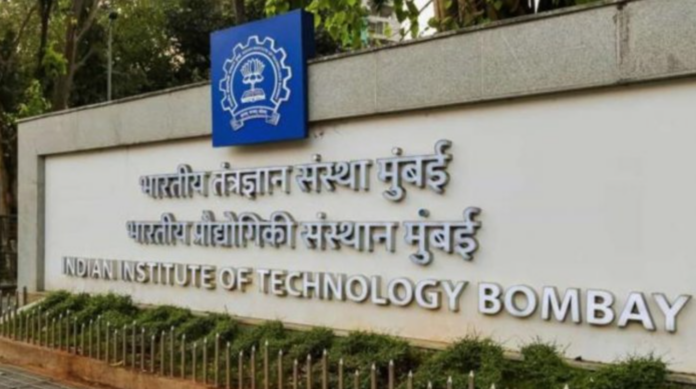The report notes that apart from the statement of Darshan Solanki’s sister, there is no particular evidence of direct caste-based discrimination experienced by the student during his time at IIT Bombay.
TCN Special Correspondent
MUMBAI (MAHARASHTRA) — The enquiry committee constituted by the Indian Institute of Technology-Bombay to investigate the allegations of discrimination against its student, Darshan Solanki, has revealed in its report that Solanki did not face any “caste-based discrimination” at the campus.
Solanki, a first-year student in B. Tech (Chemical) course at the IIT-Bombay, allegedly died by jumping off the seventh floor of a hostel building located on the campus on February 12. The report has revealed Solanki’s “deteriorating academic performance” as a possible reason behind his extreme action.
Belonging to a “Scheduled Caste” Solanki’s family had claimed he faced discrimination at the IIT-Bombay for belonging to the community and suspected foul play in his death.
A top rights group in India, the People’s Union of Civil Liberties (PUCL), quoting Solanki’s sister had also alleged that Darshan had confided in her and his aunt that he would face discrimination at the institute.
A 12-person committee led by Chemistry Department head Professor Nand Kishore was formed by IIT Bombay to look into the events that led to the student’s death. The committee submitted its report to the government on March 2.
The report, it is learnt, states that according to the preliminary assessment, “apart from the statement of Darshan Solanki’s sister, there is no particular evidence of direct caste-based discrimination experienced by the student during his time at IIT Bombay”.
Initially, after Solanki’s death, police registered an Accidental Death Report (ADR) into the incident. However, the demands for an SIT probe gathered pace and police formed a team to investigate the incident.
So far, police have also recorded statements from the Solanki family.
Expressing distress, at the unfortunate incident, a spokesperson of PUCL’s Maharashtra chapter said this “drastic step” is no different than what propelled Ankit Ambore (2014 in IIT Bombay), Dr Payal Tadvi (2019), Rohit Vimula (2016 ) or Senthil Kumar (2008) or hundreds of others.
It was after the persistent efforts of the anti-caste movement that finally only in 1972, the IITs were forced to implement mandatory reservations for students from the SC/ST communities, that too with only 15 students from SC/ST backgrounds in each Institute.
In 1996 there was a study conducted on five IITs. The study came up with observations and recommendations. The observations included the financial hardships and discrimination faced by students from marginalized communities. It noted the high dropout rate amongst those students and recommended stern action against the discrimination, suggested facilitating loans and scholarships, as well as counselling for all students.
In 1980 IIT Bombay students protested over the expulsion of four students, who were facing difficulties in English language learning issue, which resulted in 21 days closure of the Institute.
In 2014 following the death by suicide of a student of IIT Bombay, from a marginalized community, Aniket Ambore, a committee was appointed headed by Professor A K Suresh. The committee submitted recommendations for providing facilities to students from marginalized communities, which were accepted by the Institute. Out of all the recommendations the only action taken was in 2017, which was the formation of SC/ST cells.
PUCL in a detailed statement had said that what is required is to provide the students from marginalized communities with academic institutes which are determined to counter caste hierarchy by institutionalizing measures and mechanisms to create an atmosphere which is inclusive. Atmosphere wherein the entire student community understand the caste discrimination which is ingrained in our society and resolves to counter it first by understanding how the caste hierarchies operate. There is a need to combat the caste blindness prevalent in dominant castes in society.
The PUCL has said that the SIT must be completely transparent in their functioning and provide all available information and statements of any persons concerning this enquiry with his parents.
“Darshan’s parents should be allowed to meet his roommate, friends, faculties as they desire. His parent’s must be provided with a substantial amount of interim relief immediately. And all the digital devices of Darshan, emails and correspondence must be secured, and his parents must be provided proper copies of the same.”
The rights group has further said that there is a need to evolve strategies at the Institutional level by introducing a curriculum that includes fundamental classroom courses, which bring awareness on issues of discrimination faced due to Caste, gender, sexual orientation, ethnicity, transformative justice as embedded in the Indian constitution.
It said that there is a need to end segregation based on food and caste-based discrimination. Enactment of new legislation to respond to caste‐based discrimination in HEls at all Indian levels. There is also an urgent need to enact legislation which counters prevalent discrimination. There are UGC rules and regulations binding on Institutes, but those are not complied with. In the past, there have been recommendations given in the context of Medical Educational Institutes. The way POSH Act (2013) provides for prevention, as well as protection, similarly all entrenched discriminations need to be focused on.
Meanwhile, the data shared in Parliament by the Minister of Education shows 122 student deaths by suicide in the years between 2014 and 2021 from Higher Educational Institutes (HEIs).
The data also points out that a larger proportion (68) of deaths of students are from socially and economically backward communities, indicating entrenched institutionalised caste discrimination which drives the students to this drastic end. Almost 63% of the undergraduate dropouts at the top seven Indian Institutes of Technology (IITs) over the last five years are from the reserved categories.


